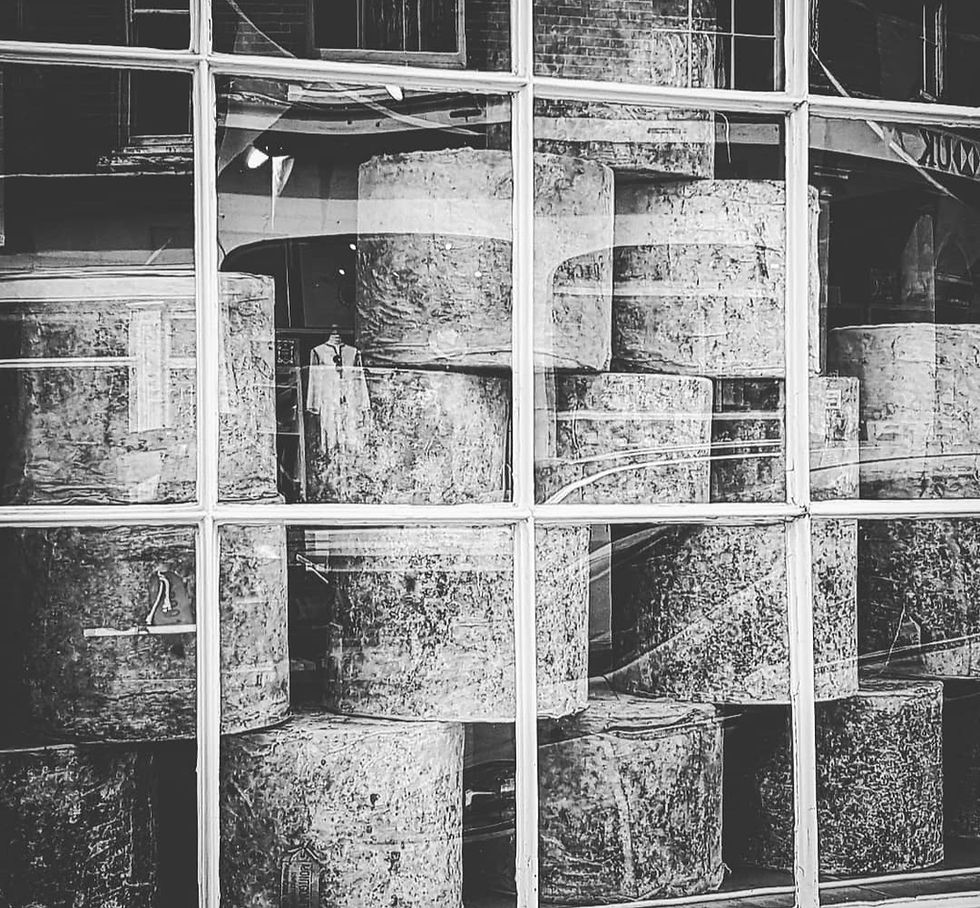Cheddar
- hopkinscarolyns
- Sep 11, 2023
- 4 min read

Cheesemaker: Montgomery's, Westcombe, Keen's, Quicke's, Trethowan Brothers, Hafod, Isle of Mull and more!
Region: Global
Milk: cows
Pasteurisation: raw
Vegetarian: no
Cheddar. One of the UK's most famous cheeses, stalwart of everything from sandwiches to cheese-on-toast to a pub ploughmans, it's a cheese we all know and love. Visitors to the Truck often confide that 'I only really like Cheddar' - never something I mind, being based in 'Cheddar Country'.
But while it's become almost ubiquitous today, very little of the cheddar consumed is the real deal. Block cheddars - sealed in plastic to age for a few months, with additives to mimic the flavour of real cheddar - dominate the market, while traditional cheddars make up just 3% of sales.
So what makes a cheddar Cheddar?
Real cheddars will almost always be produced with raw milk, usually from the cheesemakers own herd, using traditional rennet;
They should be 'Cheddared' by hand (a hugely labour intensive task, where the cheesemakers cut drained curds into blocks, either repeatedly stacking and turning them or hanging them to compress the curds and expel whey)
After pressing (usually overnight) they should be bound with cheesecloth and lard before aging for a minimum of 9 months. Most cheesemakers will keep their cheeses for at least a year, selecting the best to mature for 18 months to 2 years.
Originally produced within 30 miles of Wells Cathedral (I was once told a story that farms making cheddar had to be within earshot of the cathedral bells!), there are now cheddars being produced all over the world. Some are extraordinarily good, using production techniques that would be familiar to the earliest producers of the cheese; Hafod, from west Wales, 'hang' mats of their curds in a slower - and older - version of Cheddaring, but are well beyond the traditional regional restrictions.
The restrictions around producing cheddar are somewhat murky. 'Cheddar' is entirely unprotected - anyone could manufacture a slab of hard-pressed curd and market it as cheddar. 'Westcountry Farmhouse Cheddar' is protected under a PDO (Product of Designated Origin) which demands that the cheese be made in Somerset, Dorset, Devon or Cornwall, but places very few other requirements.
In 2003, three cheesemakers created a Slow Food Presidium, which went further in stipulating that Cheddar should be made in Somerset with the cheesemakers' own, unpasturised milk, should use traditional rennet, should be cheddared and cloth wrapped by hand. These restrictions, however, eliminate several outstanding cheesemakers with histories of making cheddar that go back generations.
Part of the difficulty in where to draw the line about when a cheese can be called Cheddar stems from it's own nature - being firm and very stable, it has historically been an excellent cheese for transporting over long-distance. The popularity of the imported cheese led cheesemakers all over the globe to create their own version to tap into the growing market - imitation is the sincerest form of flattery, perhaps?
It also proved to be a great cheese to standardise, leading the way for mass production, where there is little requirement or room for the intuitive tweaks of the artisan cheesemaker. That standardisation came in the mid-19th century at the hands of Somerset-born Joseph Harding, whose methods set out the procedure to make cheddar as we know it now. Harding and his family shared their method widely; his wife, Rachel, was invited to Ayrshire to teach it there, their son Henry introduced it to Australia whilst cheesemakers from all over the world would visit the Hardings and return to their home countries, armed with the Harding Method to start producing their own cheddars.
Then, in 1933, came the Milk Marketing Board, soon followed by rationing and the creation of Government Cheddar.
With the outbreak of war and the drastic fall in production that came with it, there was a desperate need to get as much cheese from the farms to the kitchen table as possible. The risk of the artisan cheesemaker, who could lose an entire batch thanks to an overactive starter culture or a slightly inattentive hand in sealing the cheeses in their cloths, was too great a chance. Instead, dairies were instructed to produce only a single type of cheese - Government Cheddar (the only exception to this was Wensleydale, thanks to the heroic efforts of a consortium of dairymen led by Kit Calvert - more on that in another post).
Government Cheddar bore little resemblance to farmhouse cheddar. Produced en-masse, with milk from farms all over the country and as much mechanisation as possible to help maintain production when workers were drafted, it paved the way for the block cheddar we recognise today, where the entire production - pasturising, curdling, cutting, draining, salting, cheddaring (usually referred to as piling when achieved mechanically) and extruding to be sealed in plastic - takes place almost untouched by human hands.
Does it really make such a difference? Well, yes (you knew I was going to say that). The problem with standardising the way a cheese is made is that you also standardise the flavour. A block cheddar will be the same, day after day after day. A farmhouse cheddar will change with the weather, with the seasons - it's widely recognised among turophiles that most vintage cheddars will, at Christmas time, develop the quite extraordinary flavour of tropical fruits, whilst being more nutty, grassy or even silage-like, depending on what the cattle were feeding on at the time of milking. It's not uncommon to find a vein of blue creeping in from the rind of a cheese - while this would lead to a batch of block cheddar being destroyed, it's often sought after in farmhouse cheddars, where the cloth binding allows the cheese to breathe.
For me, that variation is the true hallmark of real Cheddar, whether it comes from Somerset, Scotland, Ireland or even America (though I will always remain partial to a good old Somerset Cheddar...).




Comments